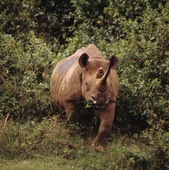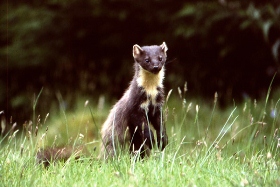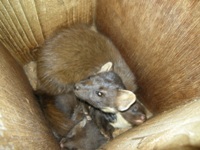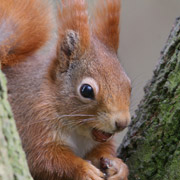Careers Café
Nia Jones (Community Marine Awareness Officer at North Wales Wildlife Trust)
Nia Jones gave great advice about wanting a career here in North Wales and how to achieve it. However I am sad to say she did not inspire me to pursue one myself. After living here for 3 years I have come to the conclusion that this weather is just not for me! She also spoke about the importance of learning welsh and how communities can be wary of new people. Another reason to be put off! However, it was great to hear about how volunteering has helped her get a paying job as North Wales Wildlife Trust.
Naomi Willis (Health Scientist at Welsh Water)
I didn’t particularly find Naomi’s talk interesting or inspiring but it was helpful to know that you can work your way up through a company. It was nice to know that doing a dull boring job for a few years can pay off and get you into something you find rewarding, even if other people find it boring!
Cherry Shacklady (Head of Biology, Friars School)
I found Cherry’s talk very interesting as I myself have considered a career in teaching. She had previously worked as a primate keeper at Welsh mountain Zoo and completed an access course in Colwyn Bay. She then studied Bio molecular studies at Bangor and after helping younger students when realised she wanted to teach. I found this inspiring as it shows you do not have to have the nest grades in school to become a teacher.
Imogen German (Graduate Teaching Assistant, SBS)
Imogen was perhaps the most relatable as she had only recently graduated in 2007. After graduating she had no idea what she wanted to do and went to work for a telemarketing firm. This is pretty much where I am at right now although I do have a few ideas. She is now doing a PhD at Bangor on beaver reintroduction in Wales which is much more interesting!
Ross Piper (zoologist, author and TV presenter) “take every opportunity and just run with it”
Ross’s talk was definitely the most inspiring and he seemed to have a lot of passion. It was interesting how he talked about all he had done to achieve his PhD and then gave it all up for another job in the city. He said he realised that it was a mistake and regretted it. This was refreshing to hear as I am always scared of making mistakes in life. He is now making wildlife documentary’s for the BBC and very happy! So even if life takes the wrong turn a good thing just might come out of it.
Overall I found the Careers café really valuable and insightful. It was great to hear how things might not work out in the begging but you can get where you want in the end.








